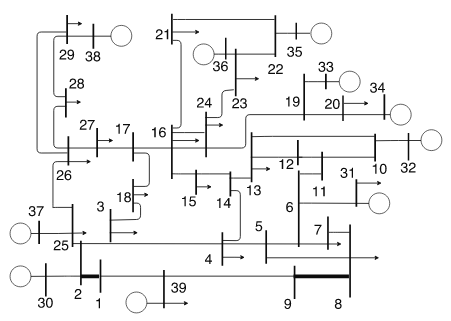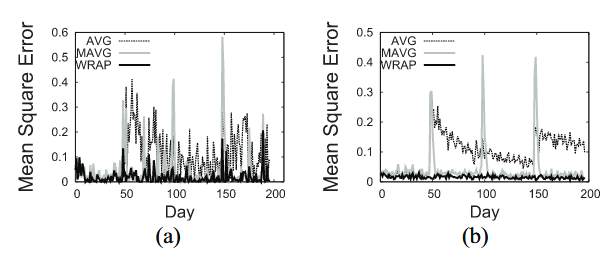ABSTRACT
This paper proposes a framework for contingency management using smart loads, which are realized through the emerging paradigm of the Internet of things. The framework involves the system operator, the load serving entities (LSEs), and the end-users with smart home management systems that automatically control adjustable loads. The system operator uses an efficient linear equation solver to quickly calculate the load curtailment needed at each bus to relieve congested lines after a contingency. Given this curtailment request, an LSE calculates a power allowance for each of its end-use customers to maximize the aggregate user utility.
This large-scale NP-hard problem is approximated to a convex optimization for efficient computation. A smart home management system determines the appliances allowed to be used in order to maximize the user’s utility within the power allowance given by the LSE. Since the user’s utility depends on the near-future usage of the appliances, the framework provides the Welch-based reactive appliance prediction (WRAP) algorithm to predict the user behavior and maximize utility. The proposed framework is validated using the New England 39-bus test system. The results show that power system components at risk can be quickly alleviated by adjusting a large number of small smart loads. Additionally, WRAP accurately predicts the users’ future behavior, minimizing the impact on the aggregate users’ utility.
RELATED WORKS
There have been efforts in managing contingencies with adjustable demand. Reference considers dispatch of load curtailment at the system-level operation alongside with generation, based on the bids submitted by the customers. Presumably these customers represent the load serving entities, but the dynamics or attributes of the individual load models are missing.
In, demand response is used in place of spinning reserves to restore the frequency post contingencies. Reference uses demand response for efficient use of transformers during contingencies, and reference corrects voltages adjusting post contingency demands. The last three works are novel in terms of using demand to manage contingencies, but have different purposes from this work, where we alleviate congestions post contingencies.
THE PROBLEM OF A SYSTEM OPERATOR
The objective of the system operator in general is to keep the system reliable at the least cost. After one or more lines failed, the power flows in other lines can approach their limits. Therefore, in this work the system operator’s objective is to find the load curtailment that can alleviate the line flows of these additional lines at risk to prevent cascading failures.
THE PROBLEM OF A USER
This section discusses the problem solved by the smart home energy management system of a user. As a contingency occurs, the system operator sends each LSE the load curtailment ∆PD (l) for each bus l.
Optimal Emergency Schedule
Using the importance factors defined previously, the frame-work makes use of the following optimization problem to determine the emergency schedule of a user u. The problem is solved by the smart home management system, which receives a power allowance Mu from the LSE.
Learning Algorithm for Importance Factors
In order to solve, the values of time-dependent importance factors γui,j’s need to be known. However, since they represent the user’s future behavior, they can only be predicted. This section describes the Welch-based Reactive Prediction (WRAP) algorithm, executed by the smart home management system. WRAP makes use of a statistical change detection mechanism based on the Welch’s t-test to predict the importance factors.
THE PROBLEM OF A LOAD SERVING ENTITY
This section describes how LSEs calculate the power allowance Mu for each user u, given the power allowance that resulted from the load curtailment at Bus l requested by the system operator ∆PD(l). The following description focuses on a single LSE and, without loss of generality, assumes one LSE is responsible for all users at one bus, to drop the LSE index l. Let Mmax be the maximum power allowance resulting from the curtailment for the considered LSE.
REGRESSION BASED HEURISTIC
Since the LSE is aware of the importance factors γui,j for each appliance i, it is also able to solve the optimization problem. In fact, according to the heuristic, the LSE solves K instances of the problem for user u using different power allowance levels.
SIMULATION RESULTS

Fig.2. The IEEE 39-bus system used in the simulations
The framework is tested on the IEEE 39-bus system modeled after the ISO New England system with 10 generators, 46 lines, and 21 nonzero load buses. The one-line diagram of this system is shown in Fig.2. All nonzero load buses are assumed to have capability of load curtailment with the Internet of Things technologies, but not all these buses are necessarily subjected to a load curtailment in contingency cases.

Fig.4. Prediction error: single time slot (a), average of all time slots (b)
Fig.4 (a) shows the results for the three approaches for a single time slot, while Fig.4 (b) shows the average across all the time slots of a day. Before the first change occurs, all the three approaches perform similarly, since in the synthetic traces, the appliance utilization is drawn from the same distribution. However, after 50 days, a change in the usage pattern occurs. The error of AVG suddenly increases, since it keeps using all the previous dataset. MAVG, instead, is more reactive, but it still incurs high errors for a few days after the change. Additionally, it often overreacts to the fluctuation in user appliance utilization during stationary periods.
CONCLUSION
This paper proposes, for the first time, a framework for contingency management that involves the system operator, the LSEs and the end-users. The framework enables the system operator to prevent subsequent failures by relieving lines possibly overloaded after the contingency. This is achieved through flexible loads at the user level realized with the emerging paradigm of the Internet of Things.
The framework provides efficient algorithmic solutions to: 1) determine the curtailment at each bus, 2) calculate the resulting power allowance for each user and, 3) predict the user’s near-future behavior to minimize the impact of the curtailment on the user utility. Results on the New England 39-bus test system, using real traces, show that the framework is effective in keeping lines within their capacity margins, with minimal impact on the user utility.
Source: Wineyard University
Authors: Stefano Ciavarella | Jhi Young Joo | Simone Silvestri